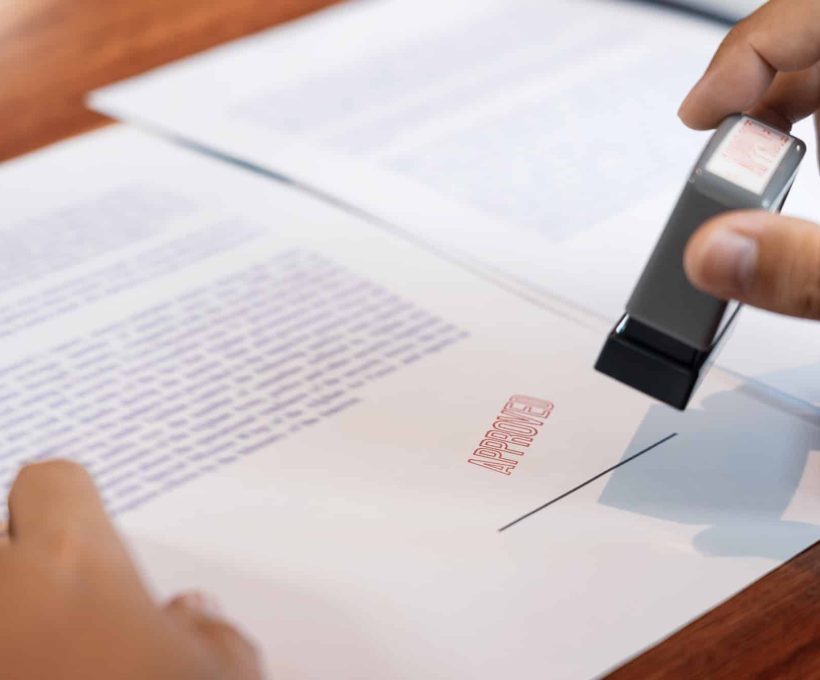California
Do you need to legalize or apostille a document in the state of California? Forget the complications and leave the work to us.
Request your quote now
At Apostille Int., we apostille your documents for use in international procedures through a fast and efficient service.

We offer apostille service in the state of California for a wide range of documents.
Among the documents we apostille in the state of California are birth certificates, death certificates, marriage certificates, divorces, wills, transcripts, diplomas, U.S. passports, police reports, name changes, and more.
If you are in the state of California and need to apostille a document, just contact us online or call (844) 606-8719. Our California apostille services take between 4 to 7 working days. But if you need a document apostilled more urgently, just let us know and we will give you the service you need.
What are the requirements for apostilling a document in California?
The most populous state in the United States, California is home to more than 39.5 million people, so many documents are apostilled here. The state includes cities such as Los Angeles, San Diego, and San Francisco, which have large international populations and people traveling back and forth between foreign nations.
Request your quote through the form.
Provide us with the necessary information for your process.
Receive your document in the shortest possible time!
California is also home to a large immigrant population, with significant numbers from Latin America and Asia. Many residents seek to experience outside cultures, whether to learn more about their heritage or explore on their own. There are also many businesses with international offices; after all, California is an economic hub for industries such as technology, entertainment, logistics, and transportation.
The following are the requirements necessary to apostille or legalize a document in the state of California. Also listed are the types of documents that can be apostilled.
Original Document
You will need to make sure of the following:
- You have an original document or duplicate issued by the State
- Appropriate signature is provided
- Original document was recently issued
The apostille of the original takes anywhere from 4-10 business days.
The California Secretary of State apostilles public and private documents if the following applies:
- Were issued by the Department of Public Health or Registrar of Vital Statistics or Vital Records Section
- Bear the signature and seal of any of the following:
- County Clerk-Recorder
- County Recorder
- Department of Health Services (DHS)
- County Assessor
- Registrar Recorder
- Controller Recorder
- Acknowledgement or jurat statement is stapled to the original notarization IF document has been notarized
Please note:
- Original documents NOT acceptable for an apostille are those that:
- Are signed by the Local Registrar, Medical Officer (M.D.), County Health Officer, Health Care Agency
- If a new copy of the original document is needed, contact the California Department of Public Health – Vital Records. You can request a copy of a vital record through the mail or online.
How We Can Help
We apostille both personal and corporate documents. Those who are seeking dual citizenship, a visa, opportunities to study abroad, or who are getting married in another country can get an apostille for the following:
- Birth, marriage, or death certificates
- Diplomas and transcripts
- Driver’s licenses
- U.S. passports
- IRS letters
- Social Security letters
- FBI background checks
- Police reports
- Power of attorney
- Income verification letters
- Retirement benefits letters
In addition, a U.S.-based corporation can register invoices, IRS certifications, articles of incorporation, a certificate of good standing, and other necessary documents with an apostille.
Scanned Photocopy of Original Document
You will need to make sure of the following:
- Appropriate signature is NOT provided.
- Original document is damaged.
- Original document was issued over 10 years ago.
- Destination country ACCEPTS apostilles of the scanned photocopy of the original document; most countries do accept an apostille of the scanned photocopy.
- You need the apostille within 24 hours.
Please note:
- Because the notary and the apostille are required to be issued from the same state, the scanned photocopy of the original document that you provide will be notarized and apostilled in New York City.
- If you are looking for an apostille from California, please use the original document apostille service.
- If you wish to have an apostille issued from California, you will need an original document. To obtain this document, contact the California Department of Public Health – Vital Records.
Contact Us Today
Apostille International is proud to offer official apostille services in California and can certify your documents in accordance with the Hague Convention. We offer Standard and Express (same day/24-hour) service. Payments are accepted via cash, credit/debit card, wire transfer, Western Union, U.S. money order, or PayPal. Call 844-606-8719 for assistance.



